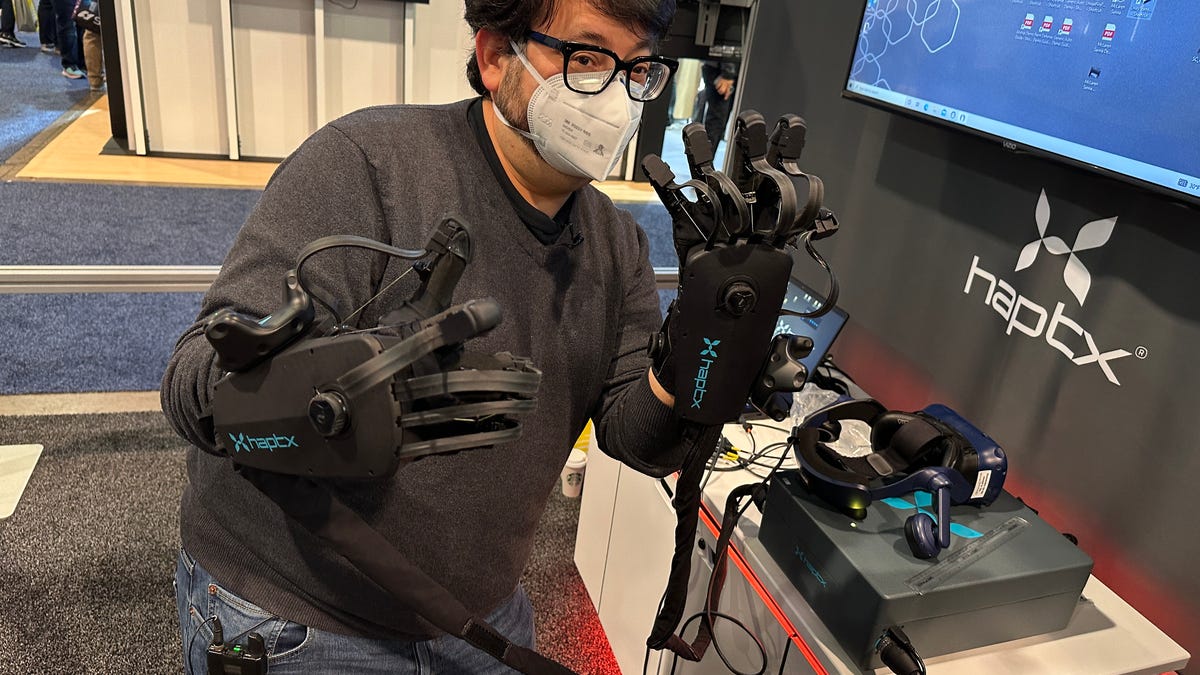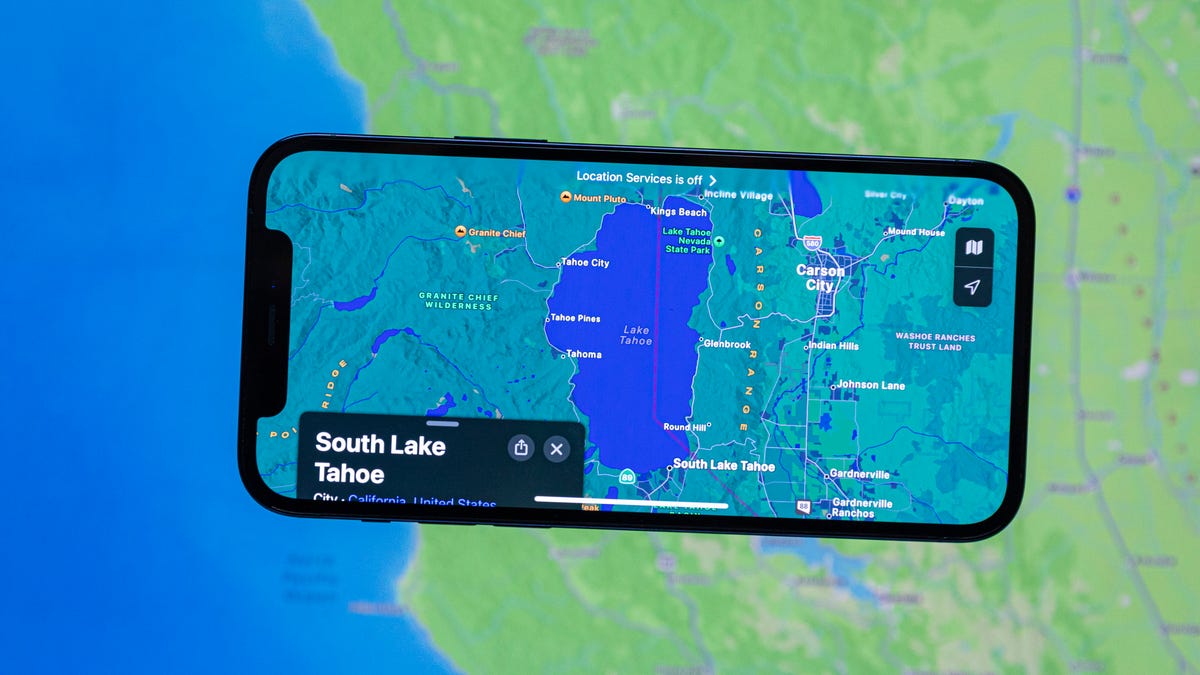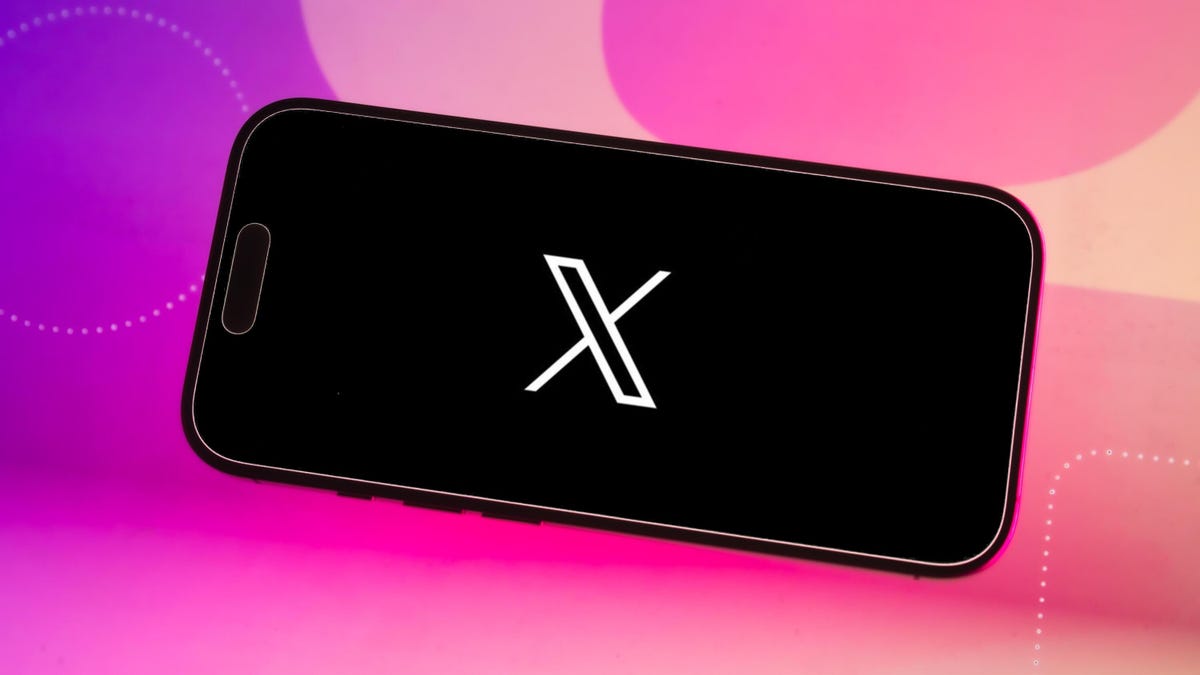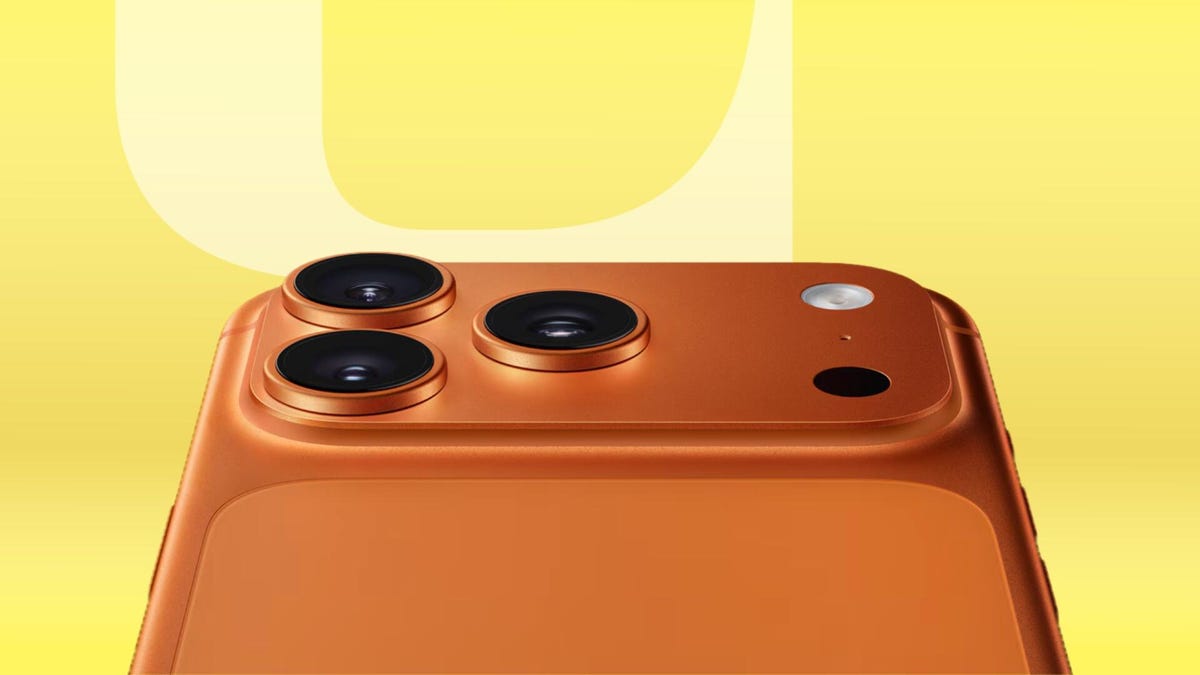Technologies
The Revelation I Got From Experiencing HaptX Is Wild
I tested gloves and buzzing things in Las Vegas to see where the future points.

I put my hands out flat and loaded them into a pair of gloves loaded with joints, cables, pumps and tightening straps. All of this was connected to a backpack-size box that helped pump pressure around my fingers and create sensations of touching things. I was about to play Jenga in VR using an $80,000 pair of haptic gloves made by HaptX.
The future of the metaverse, or how we’ll dip into virtual worlds, seems to involve VR and AR, sometimes. If it does, it’ll also mean solving what we do with our hands. While companies like Meta are already researching ways that neural input bands and haptic gloves could replace controllers, none of that is coming for years. In the meantime, is there anything better than the VR game controllers already out there or basic camera-based hand tracking? I’ve tried a couple of haptic gloves before, but I was ready to try more.
I poked around CES 2023 in Las Vegas to get some experiences with devices I hadn’t tried before, and it suddenly hit me that there’s already a spectrum of options. Each of them was a little revelation.
High end: Massive power gloves
HaptX has been recognized for years as one of the best haptic gloves products on the market, but I’d never had a chance to experience them. The hardware is highly specialized and also extremely large and expensive. I wish I’d gotten a chance to see them at the last CES I attended before this, in 2020. Finally, in 2023, I got a chance.
The gloves use microfluidics, pumping air into small bladders that create touch sensations in 133 zones per hand across the fingers and palm. At the same time, cables on the backs of the fingers pull back to simulate up to 8 pounds of force feedback. Used with apps that support them, you can reach out, grab things and actually feel them.
I’ve tried lower-cost haptic gloves at home that didn’t have the air bladders but did have cables to apply resistance. The HaptX gloves are a big step forward and the most eerily realistic ones I’ve ever tried. I wouldn’t say everything «felt real,» but the poking finger-feelings I had in my fingers and palms let me feel shapes of things, while the resistance gave me a sense of grabbing and holding stuff.
The most amazing moments were when I placed objects on my palm and seemed to feel their weight. Also, when another person’s finger virtually touched mine. Another journalist was in another VR headset with haptic gloves playing Jenga next to me. We never made contact, but occasionally we shook hands virtually or gave high-fives. Our fingers touching felt… well, oddly real, like sensing someone’s finger touching your glove.
HaptX is making another pair of smaller, more mobile gloves later this year that cost less (about $5,000) while still promising the same level of feedback, plus tactile vibrations like the haptic buzzes you might feel with game controllers. I didn’t get to demo that, but I can’t wait.
While HaptX’s tech is wild, it’s meant for industrial purposes and simulations. It represents actual reality, but it’s so massive that it wouldn’t let me do anything else other than live in its simulated world. For instance, how would I type or pull out my phone? Still, I’ll dream of interfaces that let me feel as immersed as these gloves can accomplish.
Budget gloves: bHaptics’ TactGloves
At $300, bHaptics‘ yellow haptic gloves are far, far less expensive than HaptX. They’re also completely different. Instead of creating pressure or resistance, all they really do is have various zones inside that electrically buzz, like your phone, watch or game controller, to sync up with moments when your fingers in VR would virtually touch something. Strangely, it’s very effective. In a few demos I tried, pushing buttons and touching objects provided enough feedback to feel like I was really «clicking» a thing. Another demo, which had me hug a virtual avatar mirroring my movements or shake hands, gave enough contact to fool me into feeling I was touching them.
bHaptics also makes a haptic vest I tried called the TactSuit that vibrates with feedback with supported games and apps. There aren’t many apps that work ideally with haptic gloves right now, because no one’s using haptic gloves. But bHaptics’ support of the standalone Meta Quest 2, and its wireless Bluetooth pairing, means they’re actually portable… even if they look like giant janitorial cleaning gloves. The tradeoff with being so small and wireless is their range is short. I had to keep the gloves within about two feet of the headset, otherwise they’d lose connection.
The buzzing feedback didn’t prove to me that I could absolutely reach into other worlds, but they offered enough sensation to make hand tracking feel more precise, Instead of wondering whether my hand gestures had actually contacted a virtual object, I could get a buzzing confirmation. The whole experience reminded me of some sort of game controller feedback I could wear on my fingers, in a good way.
No gloves at all: Ultraleap’s Ultrasonics
Ultraleap, a company that’s specialized in hand tracking for years, has a different approach to haptics: sensations you can feel in the air. I waved my hand above a large rectangular panel and felt ripples and buzzes beneath my fingers. The feelings are created with ultrasonic waves, high-powered sound bursts that move air almost like super-precise fans against your fingers. I tried Ultraleap’s tech back in 2020, but trying the latest and more compact arrays this year made me think about a whole new use case. It was easy to make this logic leap, since Ultraleap’s booth also demonstrated hand tracking (without haptic feedback) on Pico Neo 3 and Lynx R1 VR and mixed reality headsets.
What if… this air vibration could be used for headsets? Ultraleap is already dreaming and planning for this solution, but right now ultrasonic tech is too power hungry, and the panels too large, for headgear. The tech is mainly being used in car interface concepts, where the hand gestures and feedback could make adjusting car controls while driving easier to use and less dangerous or awkward. The range of the sensations, at least several feet, seem ideal for the arm length and radius of most existing camera-based hand-tracking tech being used right now on devices like the Meta Quest 2.
I tried a demo where I adjusted a virtual volume slider by pinching and raising the volume up and down, while feeling discrete clicks to let me know I was doing something. I could feel a virtual «bar» in the air that I could feel and perhaps even move. The rippling, subtle buzzes are far more faint than those on haptic gloves or game controllers (or your smartwatch), but they could be just enough to give that extra sense that a virtual button press, for instance, actually succeeded…or that a gesture to turn something on or off was registered.
If these interfaces move to VR and AR, Ultreleap’s representatives said they’d likely end up in larger installations first: maybe theme park rides. Ultraleap’s tech is already in experiences like the hands-free Ninjago ride at Legoland, which I’ve tried with my kids. The 3D hand-tracking ride lets me throw stars at enemies, but sometimes I’m not sure my gestures were registered. What if buzzing let me know I was making successful hits?
Haptics are likely to come from stuff we already wear
Of course, I skipped the most obvious step for AR and VR haptic feedback: smartwatches and rings. We wear buzzing things on our wrists already. Apple’s future VR/AR device might work with the Apple Watch this way, and Meta, Google, Samsung, Qualcomm and others could follow a similar path with dovetailing products. I didn’t come across any wearable watch or ring VR/AR haptics at CES 2023 (unless I missed them). But I wouldn’t be surprised if they’re coming soon. If AR and VR are ever going to get small enough to wear more often, we’re going to need controls that are far smaller than game controllers… and ways to make gesture inputs feel far less weird. Believe the buzz: Haptics is better than you think.
Technologies
Apple Maps Could Include Ads Starting Next Year, Report Says
Apple’s plan to bring promoted-business advertising to Maps may come to fruition in 2026.

Those who use Apple Maps might see advertising in the app as early as next year, according to a report from Bloomberg’s Power On newsletter. The newsletter’s author, Mark Gurman, previously reported that Apple is working to incorporate advertising into parts of its iOS mobile software. The Maps integration would be part of that larger plan.
Don’t miss any of our unbiased tech content and lab-based reviews. Add CNET as a preferred Google source.
The ads wouldn’t be pop-ups or commercials. More likely, Apple would allow businesses to pay for promoted spots that would appear in Maps search results, according to Gurman. But he says in the newsletter that the change could risk a backlash from users who are already bristling at the number of promotions they’re seeing in Apple Music, TV and News apps.
A representative for Apple did not immediately respond to a request for comment.
Google Maps, Apple’s leading competitor, has been serving ads in its iPhone app since 2009.
With the introduction of iOS 26 in September, Apple Maps added a Visited Places feature that tracks where people who use the app have been. The feature was opt-in and can be disabled.
Technologies
X Is Retiring Twitter.com. Update Your Account Now or Risk Lockout
The official retirement of the old domain is the next step in Elon Musk’s rebranding of the social media platform.

RIP Twitter.
X, the platform formerly known as Twitter, will retire its old domain. This comes with a warning for you: If you don’t update your account’s security settings soon, you could be locked out.
The shift marks another step in Elon Musk’s ongoing rebrand of the social network over the last two years. Musk, who bought Twitter in October 2022 and later renamed it X, has made sweeping changes to the platform’s features and policies.
Don’t miss any of our unbiased tech content and lab-based reviews. Add CNET as a preferred Google source.
The company notified users that anyone using hardware security keys or passkeys tied to twitter.com must reenroll them under the new x.com domain. The deadline is Nov. 10. After that date, affected accounts may be temporarily locked until the update is completed.
By November 10, we’re asking all accounts that use a security key as their two factor authentication (2FA) method to re-enroll their key to continue accessing X. You can re-enroll your existing security key, or enroll a new one.
A reminder: if you enroll a new security key, any…— Safety (@Safety) October 24, 2025
X emphasized that the move isn’t related to a data breach or security issue but is a necessary step in the platform’s domain transition, marking the end of Twitter’s last remnants.
«This change is not related to any security concern, and only impacts Yubikeys and passkeys, not other 2FA methods (such as authenticator apps),» the company’s Safety account stated on X. Because security keys enrolled as a two-factor authentication method are currently tied to the former domain, reenrolling your security key will associate them with the new domain.
For most users, the change will go unnoticed. But if you rely on physical security keys, such as YubiKeys, or use passkeys for password-less login, you could be caught off guard if you don’t take action before the cutoff date.
Read also: Time to Delete Your X (Twitter) Account? It’s Quick and Easy
How to reenroll your X account
- Check your login method. If you use a hardware security key or passkey, it’s likely tied to twitter.com.
- Reenroll your key or passkey. Go to Settings & privacy > Security and Account access > Two-factor authentication and add your method under x.com.
- Update your saved credentials. Make sure your logins now point to x.com instead of twitter.com.
Technologies
T-Mobile Is Giving You the New iPhone 17 Pro for Free
You can trade in your current phone, in any condition, and get the iPhone 17 Pro for free.

If you’re an Apple fan, you might be eyeing the new iPhone 17 Pro, either for yourself or as a very generous holiday gift. If you’re thinking about purchasing the phone, you know it carries a hefty price, starting at $1,099. To lessen the strain on your wallet and to try to persuade you to join its team, T-Mobile is offering a free iPhone 17 Pro when you trade in your old phone that’s in any condition.
The only catch is that you must have the Experience Beyond plan. When you sign up for the plan, T-Mobile will give you the iPhone 17 Pro and issue bill credits over 24 months. Note that a $35 connection fee is required.
The iPhone 17 Pro is jam-packed with features. It’s available in a new cosmic orange color, but that’s only the beginning. This phone has a speedy A19 Pro processor, an upgraded 8x optical zoom camera and Apple’s largest iPhone battery yet. Plus, its iOS 26 software has a fresh Liquid Glass design.
T-Mobile’s Experience Beyond plan is $105 per month for one line. (If you sign up for autopay, T-Mobile will reduce the cost by $5.) The plan has a five-year price guarantee, so there won’t be any unexpected cost increases during that time.
With Experience Beyond, you get satellite services, unlimited talk and texts, premium data and hotspot, Netflix, Apple TV Plus and Hulu streaming services for free plus in-flight Wi-Fi and texting. You also get unlimited texts and up to 30GB of data in over 200 countries.
If you’re not interested in an iPhone 17, take a look at our full roundup of the best deals T-Mobile has to offer right now. If you don’t have or don’t want T-Mobile, check out the rest of the iPhone 17 deals.
MOBILE DEALS OF THE WEEK
-
$920 (save $280)
-
$350 (save $50)
-
$525 (save $125)
-
$300 (save $100)
-
$334 (save $295)
Why this deal matters
The iPhone 17 Pro is probably on many wish lists this year, and T-Mobile is helping you score one for free. By signing up for the Experience Beyond phone plan, you’ll save over $1,000. Just keep in mind you must trade in a phone (in any condition) to get this deal.
Join Our Daily Deals Text Group!
Get hand-picked deals from CNET shopping experts straight to your phone.
By signing up, you confirm you are 16+ and agree to receive recurring marketing messages at the phone number provided. Consent is not a condition of purchase. Reply STOP to unsubscribe. Msg & data rates may apply. View our Privacy Policy and Terms of Use.
-

 Technologies3 года ago
Technologies3 года agoTech Companies Need to Be Held Accountable for Security, Experts Say
-

 Technologies3 года ago
Technologies3 года agoBest Handheld Game Console in 2023
-

 Technologies3 года ago
Technologies3 года agoTighten Up Your VR Game With the Best Head Straps for Quest 2
-

 Technologies4 года ago
Technologies4 года agoVerum, Wickr and Threema: next generation secured messengers
-

 Technologies4 года ago
Technologies4 года agoBlack Friday 2021: The best deals on TVs, headphones, kitchenware, and more
-

 Technologies4 года ago
Technologies4 года agoGoogle to require vaccinations as Silicon Valley rethinks return-to-office policies
-

 Technologies4 года ago
Technologies4 года agoOlivia Harlan Dekker for Verum Messenger
-

 Technologies4 года ago
Technologies4 года agoiPhone 13 event: How to watch Apple’s big announcement tomorrow
